Your trees could be sick and dying in plain sight with no apparent symptoms. Discover what to look for and how to fix it before one of them falls on your house.
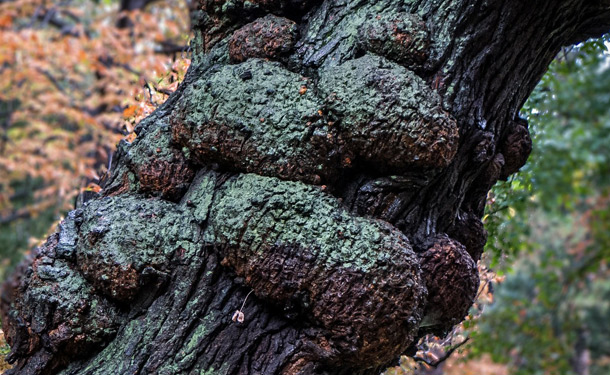
By the time diseases that cause cankers on trees become visible, it is often too late to save the limb, branch, or tree. Keeping your trees healthy and having them inspected annually are two of your greatest defenses against tree disease and death.
thetreecareguide.com defines cankers, looks at the pathogens that cause them, the signs of an infected tree, how to treat them, and how to prevent cankers from becoming a severe threat to your trees.
What Are Tree Cankers?
Tree cankers are symptoms of a fungal or bacterial pathogen having infected damaged bark (from an impact injury) or an open wound (from unhealed pruning).
The fungi and bacteria that cause cankers are common, widespread, and harmful to an extensive range of tree and shrub species. Some of the more familiar pathogens that cause cankers are:
Cytospora (a genus of Ascomycete fungi) – Frequently found on pines, spruce, willows, and poplars.
Nectria (a genus of Ascomycete fungi) – Commonly found on oaks and maples.
Phytophthora lateralis – Infects cedars and yews.
Phytophthora cinnamomi – Over 1,000 species of conifers and hardwoods worldwide can host this pathogen.
Phytophthora cambivora – Affects conifers and hardwoods throughout Europe and North America.
Canker diseases can easily kill branches or cause enough structural damage for branches to break free in severe weather. At its worst, cankers on the trunk of a tree can be in the process of girdling and subsequently killing the entire tree.
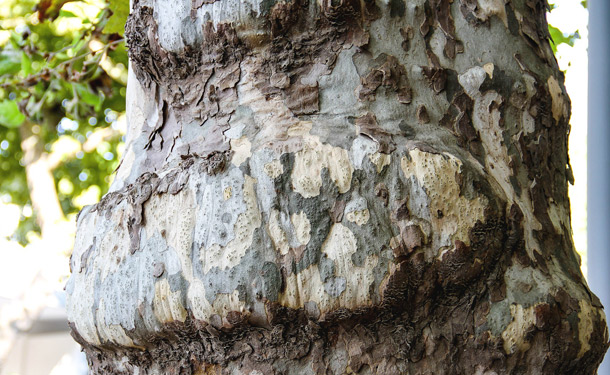
Signs and Symptoms of Tree Cankers
As a fungal or bacterial pathogen invades bark and sapwood, it blocks or kills the phloem (water and nutrient-conducting tissues). As the phloem succumbs to this invasion, wilting and dieback begin to occur.
Cankers form on branches, stems, and trunks as a result of the interaction between the pathogen and its host. As the pathogen grows and expands within the wood, the host tries to contain its growth through compartmentalization (this is the same process a tree uses to heal wounds from pruning activities). For this reason, it can take years for a healthy tree to begin showing the following symptoms:
• Wilting
• Dieback
• Stunted growth of new foliage
• Chlorosis (yellowing or discoloration of foliage)
• Early leaf drop (deciduous trees)
• Excessive loss of foliage (evergreen trees)
• Darkened lesions on the bark
• Split bark sometimes oozing sap or moisture
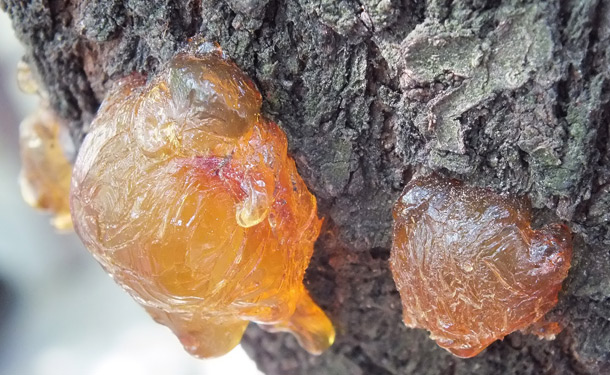
Cankers may vary in size and shape depending on the vigor of the tree and the aggressiveness of the pathogen. While most cankers appear as dark, sunken oval-shaped lesions, they may grow into what seem to be split open knots on the bark.
Now that you know the signs of cankers, read thetreecareguide.com/tree-stress-warning-signs-preservation-methods/ for tree stress warning signs to be aware of that are not associated with cankers.
Tree Canker Treatment
There are no universally registered chemicals for the treatment of cankers. However, once a canker is detected on a stem or branch, the following measures should be taken to prevent the pathogen from spreading to other areas or other trees:
• Sterilize all pruning/cutting tools between cuts with 70% rubbing alcohol or a mixture of 1 part household bleach to 10 parts water.
• Work only when the bark is dry to prevent the pathogen from easily spreading.
• For stems and twigs, prune them back to several inches behind the canker.
• Branches with cankers close to the trunk should be pruned back to the branch collar without leaving stubs.
• Never cut into a canker. By doing so, you may be allowing the pathogen to spread.
• When a canker is located on the trunk of a tree, do not attempt to remove it. In these cases, seek the advice of an arborist.
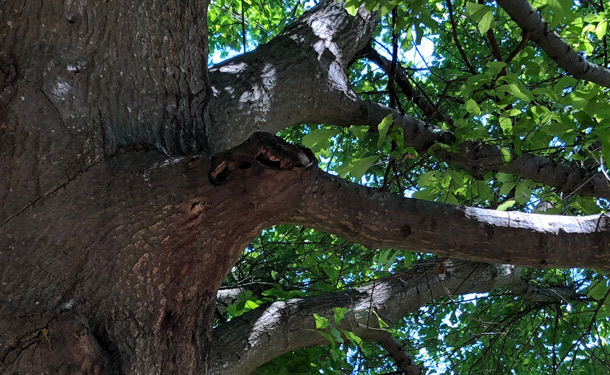
If you find yourself removing multiple cankers from a single tree or cankers from numerous trees, it would be wise to have your trees and landscape inspected by a professional.
Canker Disease Prevention
The prevention of canker pathogens, disease, and infestations all depend on a series of factors including:
• Appropriate seasonal pruning read more on pruning techniques and safety at thetreecareguide.com/tree-pruning-purpose-techniques-safety/
• Grow those trees and plants suitable for the USDA hardiness zone you are located in
• Select disease resistant species
• Use proper planting and mulching methods
• Provide ample amounts of water during dry seasons
• Maintain a nutrient-rich and pH adjusted soil appropriate for optimal growth
• Protect trees during winter and severe weather to avoid bark wounds
Another essential element in keeping trees healthy is the scheduling of annual inspections by tree professionals. They can often detect potential health risks in their early stages and help you to avoid catastrophic damages.
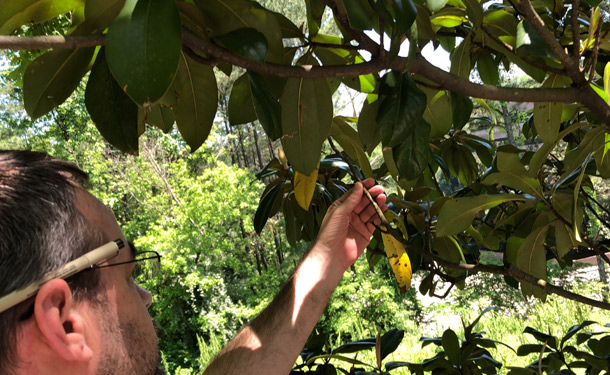
In cases where you think the damage has gone beyond repair, read thetreecareguide.com/signs-that-you-need-to-remove-your-dying-damaged-tree/ and know when you may need remove the tree altogether.
Tree Cankers and the Diseases that Cause Them
Tree diseases often go unnoticed until they have done more damage than can be mitigated. Knowing what to look for and how to take action is one of your greatest assets in keeping your trees healthy and thriving for generations.
In this article, you discovered what tree cankers are, how they are caused, the signs of an infection, how to treat cankers, and how to prevent them from causing irreparable damage to your trees and property.
Your failing to take action when your trees are infected by invasive pathogens will result in the compromised health and ultimate death of the tree and may lead to that tree falling on your home, car, or causing catastrophic, even life-threatening damages.
Sources:
http://plantclinic.cornell.edu/factsheets/treecankers.pdf
https://www.mortonarb.org/trees-plants/tree-and-plant-advice/help-diseases/canker-diseases
https://extension.colostate.edu/topic-areas/yard-garden/cytospora-canker-2-937/